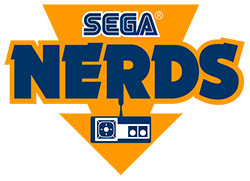
Sega Enterprise: The Start of a Revolution that Ended with a Fall
In 2001, Sega decided to discontinue the Dreamcast console production. This ended up with Sega withdrawing from the domestic hardware market it once dominated. In such a way Sega concluded one of the most error-strewn and tumultuous periods in the whole company’s 72-year-long history.
What turned out to be a sadly misguided business practice plagued with overconfidence, marked a dramatic fall from grace of the Sega Enterprises in all its tragic splendor. Once a giant in the gaming world, Sega not only conquered Europe at the start of the decade but, it also smashed Nintendo on their home ground in the US. Regardless of all this success, by the end of the 90s, problems started to pile up. And Sega’s user-base and reputation began to collapse.
It became clear that Sega was heading towards its certain doom awaiting in the abyss of insolvency. Nintendo had control over Japan and the US back in the 90s. But even this all-encompassing control couldn’t stop Sega and its most successful home console from taking over.
While Japan enjoyed the 8-bit-Famicom and the US its Western counterpart known as NES, the Nintendo Entertainment System, Sega changed the game when they unveiled their 16-bit Mega Drive.
Enter Genesis – the Most Successful Home Console
Even though Genesis was released in Japan at the very end of 1988, it didn’t do well in the fight for popularity against Famicom. Instead, it found its true fortune in the West. Genesis was launched in 1989 in North America, with more than an encouraging start. The Mega Drive finally started to overshadow Nintendo’s previously unassailable lead.
With an innovative combination of licensed sports titles and faithful arcade conversions, Genesis quickly established a loyal user-base before it gained its full supremacy. The secret of its huge success was in the man who gave Sega Sonic, Yuji Naka, and hard marketing. In fact, Sonic came out at the right moment as a genuine gaming character icon. In combination with well-played marketing, it was bound to launch Sega sky-high.
Edgy in attitude, Sega wasn’t satisfied with its success in the US alone and wanted to conquer Europe as well. Since the Master System was already well-establish in Europe, that set a good foundation for the new console. Sonic took Europe by storm and announced Sega’s supremacy over Nintendo. It was the new beginning of an era where Sega was the king.
The Mega-CD – the Beginning of the End
One of the very first missteps Sega took was the launch of the Mega-CD. With its many technical errors, an almost nightmarish path to market, and other severe problems, it was clear that this was a huge mistake.
Even though Mega-CD managed to overcome all the obstacles in its way and hit the shelves, it failed to capture its user base’s imagination. Its cheap design with a consumer grade audio CD drive simply wasn’t what users were expecting. And, despite its compelling concept, the Mega-CD initiated the fall of Sega.
The Following 32X
The 32X followed the Mega-CD as an attempt to boost the popularity of the Mega Drive, especially in the West. The main idea was to launch several more powerful systems. The problems occurred in the implementation, which made it quite uncompetitive. There were two reasons for this: the cost and impaired functionality.
The 32X was an introduction of the Mega Drive’s true successor, which was the 32-bit Saturn. Still, the users were utterly dissatisfied with it, which was a complete disaster on many levels. The pressure to reduce cost, rushed hardware, and lousy functionality made it impossible to sell. The situation was almost the same in Europe, too.
It was more than clear that the 32X was nothing more than a complete commercial failure and it split Sega’s target audience.
The Downfall and the Aftermath
Anything following this was the company’s attempt to recover from the damage that the 32X and Saturn caused. However, without any success, as it turned out. Sega had a hard time keeping up with the rapid growth of online gaming. Eventually, on the 31st of January, 2001, Sega went official about cutting the Dreamcast adrift. It’s hard to imagine what Sega gaming experience would look like these days when various gaming software has become so sophisticated as it is today. Not to mention the opportunities gamers have to get the most out of their playtime.
The Dreamcast was the successor to Saturn, and it was hoped it would reestablish Sega on the top of the food chain. Sega decided to become primarily a hardware company instead of a software company, and this announced the end of their gaming endeavors.





